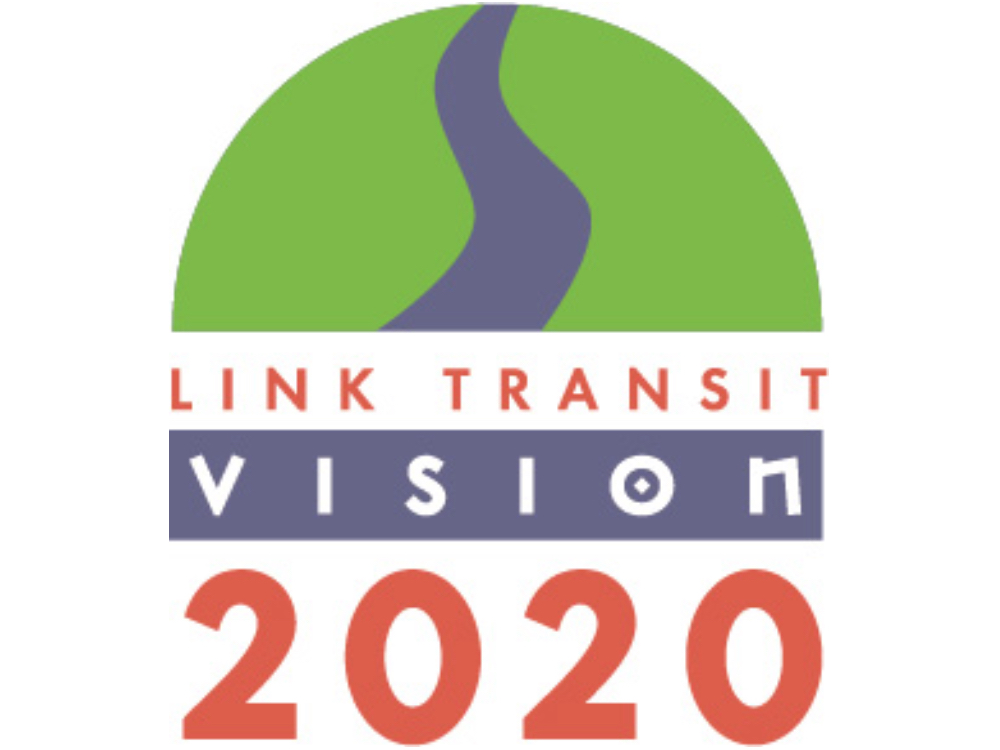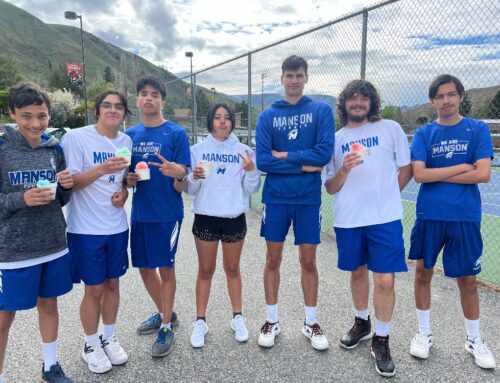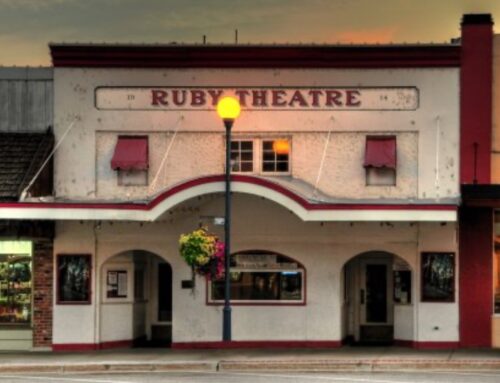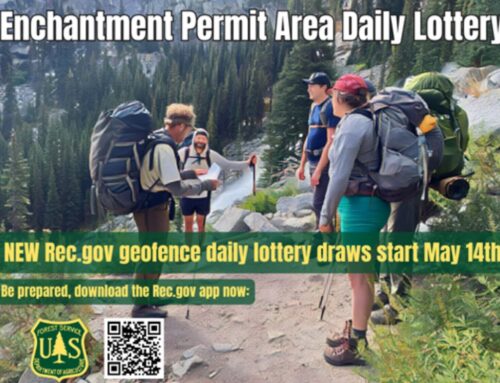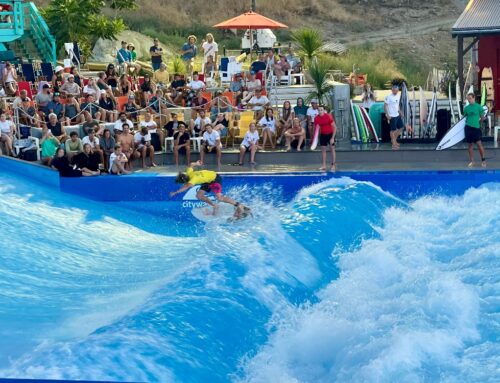Plan addresses community desire for increased routes, days, and additional services
VISION 2020 – Information and graphs shared directly from LinkTransit.com
Since the spring of 2016, Link Transit has been engaging the citizens of our community to determine what they would like their transit system to be.
They said they want a more comprehensive transit system that operates earlier in the mornings, later in the evenings, on Saturdays, Sundays and holidays. They told us that the existing system is too limited to meet many of the needs of our region.
For regional economic growth, they feel that public transportation has to meet the needs of tourism and service workers on the weekends, and for second and third shift workers in our medical, manufacturing and fruit industries.
They also told us we need more comprehensive service to provide access to affordable housing and to more fully meet the special needs of disabled residents and our growing senior population. We also heard a desire for smaller buses serving residential neighborhoods, and an increase in frequency on routes operating on major arterials.
Most importantly, they told us that these improvements were important enough for them to support a small increase in the sales tax. What follows is our proposal to respond to these community desires.
 |
 |
 |
| CONNECT PEOPLE TO SERVICES | IMPROVE SERVICES FOR SENIORS AND DISABLED PERSONS |
PARTNER IN ADVANCING REGIONAL ECONOMIC DEVELOPMENT |
| More trips and improved connections throughout the region with expanded service to:
|
Improvements to enhance mobility options for disabled persons and the growing population of senior citizens:
|
Connect workers to jobs and customers to cash registers:
|
What improvements are being proposed:
- Improve fixed route bus service by operating longer hours, adding weekend and holiday service, and increasing frequency
- Expand transit service to new areas, with new ways of delivering service
- Invest in infrastructure and technology to speed up transit travel.

What will be funded?
In total, more than 30 projects area planned over the next 6 years.
Specific Projects
Wenatchee and East Wenatchee Urban Area
- Create high frequency (15 minute) north-south services
- More direct neighborhood services with smaller vehicles
- Service options to serve 2nd and 3rd shift workers
- More Saturday service
- Provide Sunday service and service on MLK, Veterans and Presidents Day holidays
- Sidewalk and stop improvements
Link Plus Service (service for persons with disabilities)
- Extended hours of service
- Easier access low-floor buses/vans
- Easier to handle electronic fares
- Expanded same-day service
Chelan/Manson to Wenatchee
- Increase daily round trips
- Provide Saturday and Sunday and holiday service
- Improved local service in Chelan/Manson area
- Develop a Chelan Transit Center/Park and Ride
- Sidewalk and stop improvements
Leavenworth to Wenatchee
- Increase daily round trips
- Reduced travel time by more direct route
- Provide Saturday, Sunday and holiday service
- Construct Peshastin highway stop
- Construct highway stop at Hay Canyon/Goodwin Rd
Cashmere to Wenatchee
- Increase daily round trips
- Provide Saturday, Sunday and holiday service
- Later service
- Develop Cashmere Transit Center/Park and Ride
Rock Island to East Wenatchee
- Increase daily round trips
- Later service
- Add Saturday, Sunday and holiday service
- Develop Rock Island Park-n-Ride
Malaga to Wenatchee
- Increase daily round trips
- Later service
- Add Saturday, Sunday and holiday service
Waterville to Wenatchee
- Increase daily round trips
- Later service
- Add Saturday, Sunday and holiday service
All Areas
- Maintain low fares
- More direct routes – faster travel times
- Develop ridesharing options (van and bus pools, working with transportation network companies and vehicle sharing organizations)
- Implement electronic fares
- Smart phone information apps
- Real time arrival signs
- More energy and environmentally sound fleet
How will this plan be funded?
To fully fund these proposed improvements, Link Transit would need to have voter approval to increase local sales tax by 2/10 of one percent (.2%). This means for every ten-dollar retail purchase, Link Transit would receive an additional two cents in sales tax.
How much will this cost the taxpayer?
For the average household in the service area, this would be an impact of about $24.00 per year in additional sales tax. The tax increase would take place in phases:
- A one tenth increase (0.1%) in local sales tax would become effective on January 1, 2020
- An additional one tenth increase (0.1%) in local sales tax would become effective on January 1, 2022.
What is the timeline for changes to occur?

Post – 2021 projects include:
- Park and Rides in Cashmere and Chelan
- Transit improvements on North Wenatchee Avenue
- Upgraded stops on US 2/97 & US 97A
- Sidewalk and pathway improvements
- Regionwide commuter alternatives (vanpool, rideshare)
How will each dollar received be spent?

Questions and Answers
Why can’t Link Transit keep operating at its current tax level?
Link Transit can keep operating the services it currently provides at its current tax level. However, the community has told Link Transit that it wants significantly more transit services. In order to expand its services to operate on Sundays, operate more Saturdays and holidays, operate later to cover 2nd and 3rd shifts it needs an increase in revenues.
If Link Transit needs more revenue, why doesn’t it just raise its fares?
Transit fares never cover the cost of service anywhere in the USA. The average fare Statewide covers less than 20% of the services costs. In rural areas, fares cover even less. 5 – 7% is common. Link Transit covers about 6% of its fixed route (regular buses) costs from fares.
What would Link Transit use the funding for?
Link Transit would use the new revenues to expand its transportation services. Link Transit would expand its services to include Sundays, expand the hours of operations on Saturdays, extend hours of operations into the evenings, purchase new, smaller and clean powered vehicles. Link Transit would also increase the frequency of service of fixed route on our major north-south routes and provide more direct routing from East Wenatchee that would require fewer or no transfers. All of the revenues generated by the additional taxes would be committed to improving and expanding Link Transit’s services.
Who came up with Link Transit’s expansion plan?
Over the past two years, Link Transit has engaged in an extensive community outreach effort. Through two separate survey efforts, Link Transit received over 4,000 responses and hundreds of written comments. These responses came from a very representative group of individuals. Over ½ of respondents identified themselves as non-riders or riders who have not ridden in the last year. The ethnic, gender and economic profile of respondents closely aligned with our community. These individuals told us what services they desired and that they were willing to be taxed to fund them.
How many people use Link Transit?
On an average week day, Link Transit provides about 3,600 passenger trips or just about 1 million rides per year.
Who rides Link Transit?
Link Transit’s riders are diverse. About 30% of our riders commute to or from the Wenatchee area to the Leavenworth/Cashmere area and Chelan/Manson areas. These commuters include Wenatchee Valley College students, local business owners and their employees, various service workers, Crunch Pak employees, private school students, inter-district school students and many other people accessing health care and governmental services. We also have a large number of riders who do not have any other transportation choices. As 34% of the citizens of Washington State do not have drivers licenses (young people, many older persons, persons with disabilities, low income persons, people that have lost licenses due to safety or legal issues) these individuals tend to depend on Link Transit. Our downtown shuttles (Current routes A, B and C) move over 400,000 people per year connecting the Wenatchee Valley Mall to Valley North Center through downtown and downtown to Pybus and Wenatchee Valley College. These routes provide circulator service for lunch trips for area employees, circulation for tourists and convention center visitors as well as a lot of access to our valley’s shopping and medical service areas.
Why does Link Transit need more money when all I see are empty buses?
Link Transit does not really have empty buses. On average, Link Transit buses carry 13 persons per hour in service. This being said, buses may be empty or nearly empty when you see them. Buses will start a route empty, picking people up and dropping them off along the route. So a really busy route (a route that carries 25 persons per hour) can have short periods with no one on the bus.
Why does Link Transit need such large buses? They don’t seem to ever be full.
Buses are a little like roads. Your buy the bus for its peak loads, not for its average load. For example, our Leavenworth service uses a 40’ bus that seats 38 people. About once a day, we fill all of the seats on this bus (when school and Crunch Pak gets out in the afternoon). In order to give everyone a seat (we try to provide seats when we are travelling at 60 mph) we need the large bus. The cost of trading out to a smaller bus at other times is not cost effective because you would then need two buses for a single route and the labor cost involved in the trade-out exceeds any vehicle savings.
On some routes in Wenatchee and East Wenatchee, we could probably use a smaller bus. In order to serve persons who use wheelchairs and the elderly with limited mobility, we have chosen to only use low floor buses (buses with no steps) in town. Low floor buses have not been available is sizes less than 30 feet until very recently. We have purchased some of these smaller low floor buses for the urban routes where we don’t have the capacity needs for our larger buses and you should begin to see them in the next few months.
How much would the additional tax cost me?
A 0.2% sales tax (2/10th of a cent or 2 cents on a ten dollar purchase) would cost the average Chelan and Douglas county household an additional $24.00 per year. On an individual basis, the tax would cost an average individual an additional $8.88 per year.
How does Link Transit’s sales tax rate compare to other transit systems?
Link Transit’s current tax rate is 0.4%. Around the State sales tax rates vary from a low of 0.2% in Grant Transit (Moses Lake) to a high of 1.2% at Community Transit (Snohomish County). The systems closest to Link Transit in size and scope are at 0.6% Ben Franklin Transit (Tri-cities) City of Everett, Mason Transit (Shelton), Clallam Transit (Port Angeles) Valley Transit (Walla Walla). Island Transit (Whidbey and Camano Islands) and Jefferson Transit (Port Townsend) are at 0.9% and InterCity Transit (Olympia) is at 1.2%.
Why a sales tax?
Link Transit is proposing an increase in the local sales tax because it is the only locally generated funding source that Link Transit is permitted to use.
How efficient is Link Transit?
Link Transit is very service efficient. In 2017 Link Transit was one of only 11 small transit systems nationwide (out of 337) that achieves all six of the federal performance measures (passenger miles per mile of service, passenger miles per hour of service, miles in service per capita, hours of service per capita, passengers per capita, passenger miles per capita) (passenger miles are the number of miles each individual passenger travels ie: a bus that has 4 passengers and travels 2 miles would have had 8 passenger miles.)
On a cost basis, Link Transit’s cost per hour of service is currently $124 per hour. This is 28% less than the statewide hourly average.
If you need money, why did you stop having ads on the buses?
Link Transit had ads on its buses for 15 years. The ads never really generated much revenue (between $5,000 and $35,000 per year). We determined that the damage the vinyl ads did to the buses (road salts got behind the ads and corroded the buses) was costing us more to fix than we were earning. Additionally the full side and full wrap ads caused confusion. People thought that the bus with the ads for the casino was a casino shuttle. Because of the limited revenues and the identity confusion, the Board chose to stop placing advertising on the outside of our vehicles.
Why should I pay for something I will never use?
Some people may never want or be able to use Link Transit. However, they still benefit from the investment in Link Transit. Link Transit is the primary form of transportation for much of the transportation limited population. This includes young people going to school or college, elderly persons going to medical care or for nutrition, developmentally disabled persons who are going to work and recreation and low income individuals who are working to move themselves out of poverty or for a better life. Our entire community benefits when these individuals get access to basic life needs.
The Wenatchee area is beginning to see some congestion on North Wenatchee Ave and the Sellar Bridge. Drivers benefit from other drivers choosing to use transit. It only takes a small percentage of folks to choose transit to free up road space to keep traffic moving.
Why the long delay in implementing some services?
Some service improvements will require the purchase of additional buses in order to operate. Lead time on new bus purchases is anywhere from 8 – 24 months depending on the vehicle. Increasing frequency or providing coverage to new areas all require more buses than we currently have, so this is why it will take longer to implement these types of services.
Why are the sales tax increases being phased in?
Some service improvements can be implemented relatively quickly without the need to acquire additional equipment (see above). We will not need all of the additional revenue this increase would provide until such time that we need to pay for additional buses. The first 1/10% will be sufficient to fund the cost of the first round of improvements, which will require the additional manpower more than any other resource.
Are there things that may cause some projects to be delayed?
Acquiring equipment and personnel to operate additional services will be the main components to getting the service on the road, so any hiccups in either of these areas may cause some delays in rollout.
What level of service would be operated on Saturdays and Sundays?
This will vary by the location we are serving. Less populated areas will very likely have less service than some of the larger communities. We will work with the residents of each city or town to so we may learn what the transportation demands and needs are. This will allow us to tailor the services to meet what each city or town desires.
What do you mean by “new methods of service delivery”?
This could be a dial-a-ride service, volunteer driver program, or a variety of alternatives to having a bus operating on fixed route with a fixed schedule. Smaller communities don’t usually have the ongoing demand to justify this type of service, so looking at other ways of keeping people mobile is sometimes more cost effective.
Would there be a fare increase as part of this package?
At this time, we are not looking at any type of fare increase. However, there may some changes to the fare structure depending on the types of services offered in the future. These could be a higher fare for express services, etc.
How can I provide some input to this plan?
You can email our transportation planner at transportationplanner@linktransit.com


